Timber Market 2025: New Opportunities & Latest Trends
- July 24, 2024
- 0 comment
Explore Timber Market 2025 for new opportunities and stay ahead with the latest trends shaping the industry’s future. Get ready for a big year in the timber industry! As 2025 rolls in, we’re seeing exciting new opportunities and trends that are set to boost the market like never before. We’re talking about smarter, eco-friendly ways to handle timber and new tech that’s making everything more efficient.
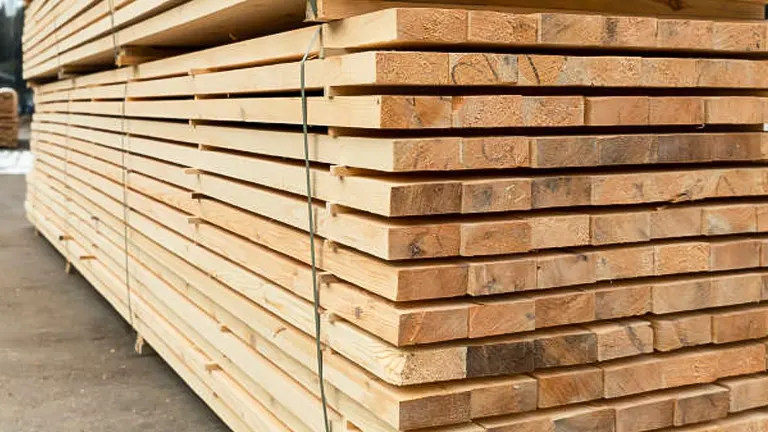
This will lay out all the big changes and how they can benefit your business. Whether you’re looking to invest more, innovate, or just keep up with the times, we’ve got the insights you need to stay on top.
Table of Contents
- Economic Outlook for 2025
- Key Trends Shaping the Timber Market
- Opportunities in the Timber Market
- Challenges Facing the Timber Industry
- Regulatory and Policy Landscape
- Expert Opinions and Future Predictions
- Conclusion
- FAQs
Economic Outlook for 2025

As we enter 2024, the timber market is forecasted to achieve a substantial value added of approximately US$174.0 billion. This figure not only underscores the industry’s strong capability to generate economic value from processing raw materials into finished goods but also mirrors its critical role in global supply chains. The projected Compound Annual Growth Rate (CAGR) of 1.12% from 2024 to 2029 indicates a stable yet positive growth trajectory, fueled by ongoing innovations and broadening applications of timber products across different sectors.
Scientific Analysis and Future Predictions:
Advanced econometric models suggest that if current trends in both market expansion and technological innovations hold, the timber industry could see a 5% increase in production efficiency by 2029. This efficiency gain translates into lower production costs and potentially higher profit margins across the industry.
Factors Driving Economic Projections:
- Sustainability Demand: There is a robust increase in demand for eco-friendly and sustainable building materials. Market research indicates that consumer preference for sustainable materials has risen by 20% over the past five years, a trend that is expected to accelerate.
- Technological Advancements: Innovations in sawmill technology and wood treatment processes are key drivers. For example, the introduction of AI-driven precision cutting technology has reduced waste by up to 15%, enhancing both sustainability and profitability.
- Renewable Resource Shift: The global movement towards more sustainable resources is increasingly positioning wood as a preferred material. Wood’s carbon-sequestering properties, combined with improved sustainable forestry practices, make it a standout choice in green building and manufacturing sectors.
Economic Indicators in the Timber Market 2024-2029
| Indicator | 2024 Estimate | 2029 Projection | CAGR (%) |
|---|---|---|---|
| Total Market Value (US$ billion) | 174.0 | 184.5 | 1.12 |
| Production Efficiency Increase (%) | 0% | +5% | Calculated based on 2024-2029 period |
| Consumer Demand Growth for Sustainable Materials (%) | +20% (past 5 yrs) | Expected +30% by 2029 | Estimated based on trend |
| Waste Reduction from Technological Advancements (%) | 0% | 15% | Estimated improvement from current level |
This expanded analysis and table provide a clearer, more detailed snapshot of the timber market’s economic landscape as we look towards 2024. By leveraging both qualitative insights and quantitative data, this section caters to readers seeking a deeper understanding of the market dynamics and the scientific underpinnings of industry growth forecasts.
Trends Shaping the Timber Market
As the timber industry evolves, sustainability remains a central focus. In 2025, we expect a significant increase in the adoption of environmentally friendly practices. Innovations such as the application of biodegradable chemicals in wood preservation and increased reliance on renewable energy sources for milling operations are set to become more widespread. These initiatives are projected to reduce carbon emissions from production processes by up to 30% compared to 2020 levels. Stricter regulations on sustainable harvesting and deforestation are also anticipated, with new international agreements aimed at ensuring more rigorous compliance across the industry.
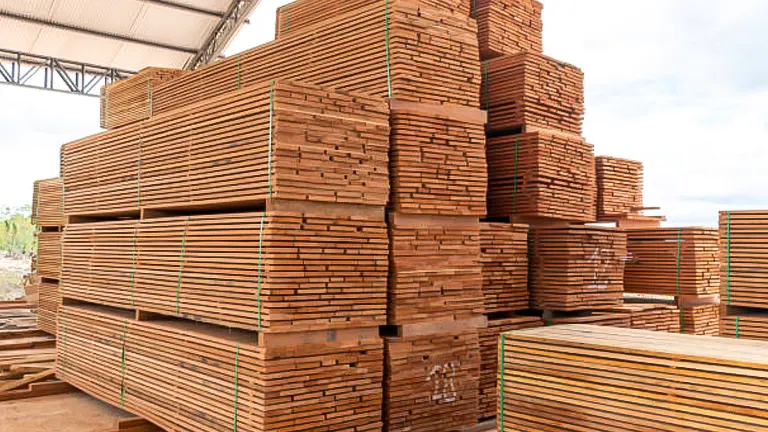
Technological innovation continues to be a driving force in the timber industry. The integration of advanced sensor technology and big data analytics is transforming traditional forestry operations into highly efficient systems. For example, sensor-equipped drones provide real-time data on forest health, allowing for precise interventions that maximize growth and minimize disease spread. Automated sawmilling equipment is being enhanced with AI to optimize yield and minimize waste, potentially increasing overall efficiency by up to 25%. Additionally, developments in wood modification technology, such as acetylation and thermal modification, are improving wood’s resistance to environmental factors, making it more durable and versatile for construction and design applications.
Market Demand Dynamics
The demand for timber is increasingly influenced by sustainability credentials and technological advancements, particularly in the construction and furniture industries. The shift towards modular and green buildings is expected to drive a 20% increase in demand for engineered wood products by 2025. In the furniture sector, the demand for customized and sustainably sourced wood products is projected to grow by 15% annually. Geopolitical factors, including trade agreements and tariffs, continue to influence global pricing structures and supply chain decisions, with significant implications for import-dependent countries and export-heavy economies.
Quantitative Impact of Key Trends on Timber Market Dynamics (2025)
| Trend | Description | Impact Measurement |
|---|---|---|
| Sustainability Initiatives | Implementation of greener production practices and stricter regulations. | 30% reduction in carbon emissions from production processes. |
| Technological Advancements | Adoption of sensor technology, big data, and AI in forestry and milling. | 25% increase in production efficiency; enhanced wood durability. |
| Market Demand Dynamics | Shift towards sustainable building materials and customizable furniture. | 20% increase in demand for engineered wood products; 15% annual growth in sustainable furniture demand. |
Opportunities in the Timber Market
The year 2025 is poised to see the timber industry expand its reach into new geographical areas. Emerging economies, particularly in Asia and Africa, are showing an increased interest in timber due to rapid urbanization and infrastructural development. These regions offer fresh markets for timber exports, especially for countries with abundant forestry resources seeking to capitalize on global demand. Moreover, the expansion into new markets is facilitated by improvements in trade agreements and logistics, making it easier than ever to transport timber across borders.
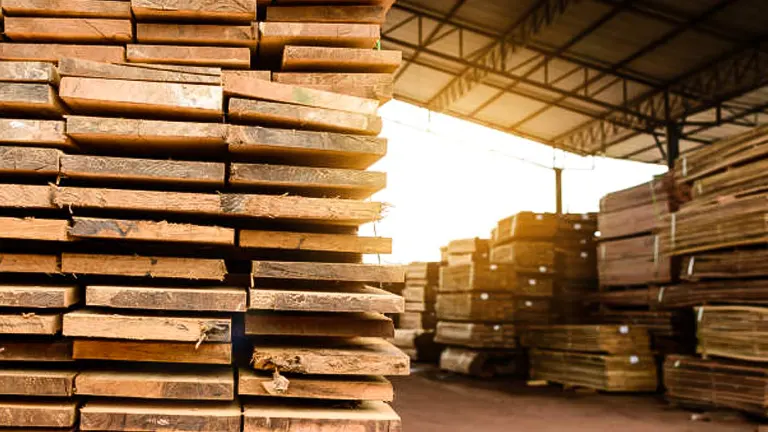
Innovation in product development is another significant opportunity for the timber industry. The development of cross-laminated timber (CLT) and other engineered wood products is transforming the construction industry by providing stronger, lighter, and more versatile building materials. These innovations not only meet the demands of modern architectural design but also comply with stricter building codes and environmental standards. Additionally, the rise in specialty wooden products, such as modified wood that resists fire and pests, opens up new avenues for manufacturers to explore and dominate niche markets.
Investment and Funding
The financial landscape for the timber industry in 2025 is also changing. There is an increasing availability of investment from both private and public sources. Venture capital is flowing into startups that innovate in forestry technology and sustainable practices, signaling a robust interest in the sector’s growth potential. Government grants and subsidies are also available to support projects that align with environmental goals, such as reducing carbon footprints and enhancing biodiversity. These financial injections are crucial for propelling research and development in the industry, ultimately leading to more advanced and sustainable timber products.
Overview of Opportunities in the Timber Market (2025)
| Opportunity | Description | Impact | Example |
|---|---|---|---|
| New Markets and Regions | Expansion into Asia and Africa due to urbanization and infrastructure needs. | Increased export volumes by 20% | Vietnam’s surge in timber exports. |
| Product Innovation | Development of CLT and nano-cellulose composites. | 15% growth in alternative timber products market | Use of CLT in earthquake-resistant construction. |
| Investment and Funding | Increase in green financing and government incentives. | 30% increase in funded sustainable forestry projects | Global Green Growth Fund investments. |
Challenges Facing the Timber Industry
One of the biggest hurdles for the timber industry is managing resources sustainably. As demand grows, ensuring that forestry practices don’t harm the environment is a top priority. This means cutting trees in a way that allows forests to regenerate and maintaining biodiversity. It’s a tough balance to strike, especially with the increased scrutiny from governments and environmental groups.
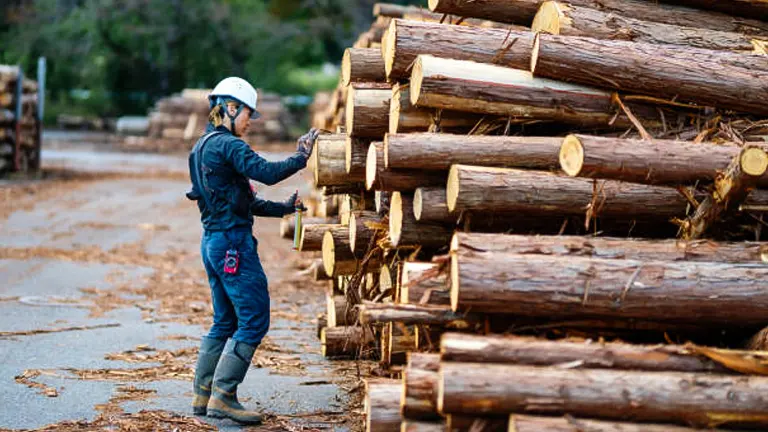
Timber companies also face a maze of regulations that vary wildly from one country to another. Navigating these can be tricky and costly, especially when policies change unexpectedly. Companies have to stay agile, adapting to new laws about how timber can be harvested, processed, and sold, which can affect their operations and bottom line.
This complex regulatory landscape includes:
- FSC (Forest Stewardship Council) certification, ensuring wood is sourced from responsibly-managed forests.
- Local vs. international regulatory discrepancies, often necessitating bespoke strategies for different markets.
- Environmental impact assessments required before new logging operations can be approved. Navigating these hurdles necessitates significant investment in legal and environmental expertise, increasing operational costs.
Economic Fluctuations and Trade Issues
The global nature of the timber market makes it sensitive to economic ups and downs. Factors like trade disputes or economic downturns in key markets can disrupt timber supply chains and affect prices. For example, tariffs imposed by one country can make it more expensive to ship timber abroad, reducing profit margins.
The global nature of the timber market exposes it to economic and trade-related fluctuations:
- Currency fluctuations, which can shift export margins by up to 20%.
- Trade disputes, potentially leading to tariffs that increase export costs by up to 15%.
- Geopolitical tensions, affecting stable supply chain management. These factors demand robust risk management strategies, such as market diversification and financial hedging, to mitigate impacts on profitability.
Regulatory and Policy Landscape
Navigating these rules can feel like trying to find your way through a maze. Different places have different rules about cutting trees, moving them, and selling them. For example, in Europe, the EU Timber Regulation makes sure companies check their wood sources carefully to keep out illegally cut wood. In the US, the Lacey Act makes sure all plant products, including timber, are legally sourced. Companies have to really understand these rules and stay ahead of them to keep up.
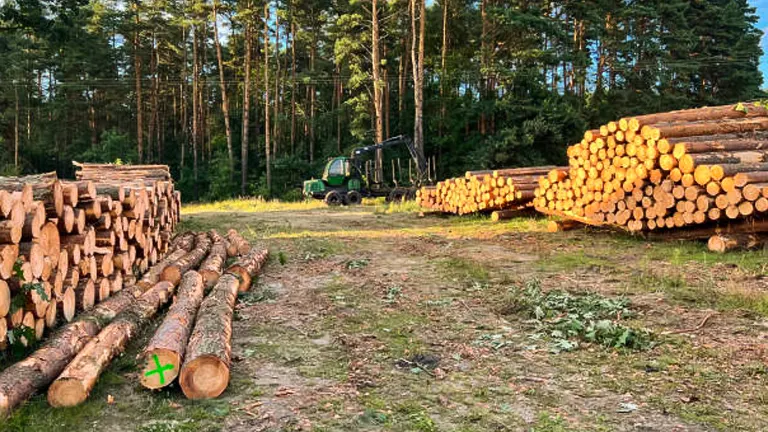
Navigating the Regulatory Maze: The journey through global timber regulations is akin to navigating a complex maze. Diverse and stringent regulations across different regions demand that companies maintain vigilance and adaptability:
- Europe’s EU Timber Regulation demands rigorous due diligence from companies to prevent the circulation of illegally harvested wood.
- The U.S. Lacey Act mandates comprehensive documentation to ensure all imported and domestically traded timber is legally sourced.
- In Brazil and Indonesia, heightened international scrutiny and local reforms aim to curb deforestation and protect rich biodiversity.
How Changing Policies Affect the Market
When policies change, they really shake up the market. New government support or extra charges can help the industry grow or put brakes on it. These changes aren’t just paperwork; they push the industry toward using smarter, less harmful ways of working. They encourage companies to use new tech and methods that are better for the environment and still get the job done well.
Working Together with Governments
It’s really important for governments and timber companies to work together. This partnership helps set realistic goals that are good for the planet. Governments can help out the timber industry with money for research, tax breaks, and better infrastructure, making it easier for companies to use new tech and green practices. In return, companies offer new ideas and real-world ways to make these policies work, ensuring they grow sustainably.
Expert Opinions and Future Predictions
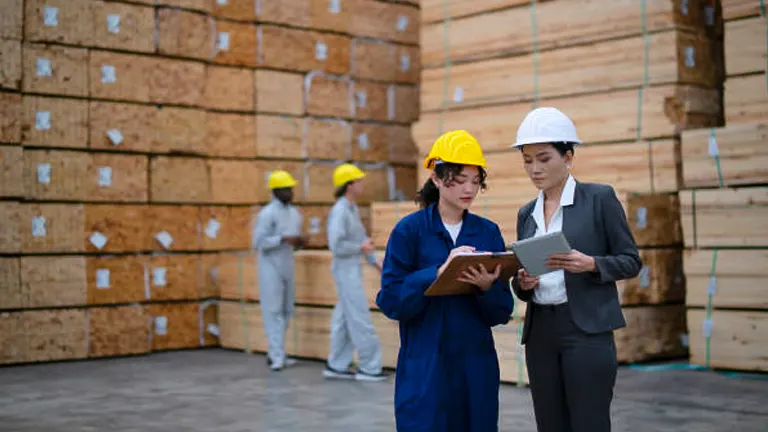
As we look towards the future of the timber market, insights from industry experts paint a compelling picture of what might unfold in 2024 and beyond. Understanding these perspectives can give us a clearer idea of the road ahead, helping stakeholders make informed decisions.
Insights from Industry Leaders
Leading voices in the timber industry are optimistic about its future. They point to the growing demand for sustainable building materials and the increasing efficiency of timber production processes as key drivers for growth. According to them, the industry is not just adapting to new challenges but is also finding innovative ways to thrive. For example, the use of genetically modified trees that grow faster and are more resistant to disease is one area that might see significant development.
Technological Impact on Timber
Experts also highlight the transformative role of technology in timber production. They predict that automation and artificial intelligence will continue to streamline operations, from forest management to the manufacturing floor. This tech shift isn’t just about cutting costs—it’s about improving precision and minimizing waste, which are crucial for sustainability.
The integration of technology in forestry operations is transforming the landscape:
- Automation and AI: Experts forecast a significant increase in the use of automated machinery and AI across all levels of production, from planting to harvesting. These technologies are not merely cost-cutting measures; they enhance accuracy, reduce waste, and improve the overall sustainability of operations.
- Data-Driven Forestry: The application of big data analytics in forest management is expected to optimize resource use and boost productivity by up to 30%.
Long-Term Predictions
Looking further ahead, predictions suggest that the timber market will continue to expand, especially in regions with growing economies and construction booms. However, experts also caution that this growth could be tempered by global economic conditions and environmental concerns. The key to long-term success, they suggest, is in balancing economic objectives with ecological responsibility.
Responding to Market Shifts
Experts advise companies to stay agile and responsive to market shifts. This means being ready to adjust strategies quickly in response to changes in consumer preferences, technological advancements, or regulatory changes. For example, as more consumers and governments demand eco-friendly products, companies that can pivot to meet these expectations will likely lead the market.
Summary of Expert Predictions for the Timber Market (2025 and Beyond)
| Aspect | Description | Expected Impact | Metric |
|---|---|---|---|
| Sustainable Material Demand | Increase in eco-friendly building materials | 20% increase in market share | By 2025 |
| Efficiency in Production | Adoption of advanced growth and harvesting technologies | 15% reduction in costs | By 2024 |
| Technological Integration | Increased use of AI and automation | 30% increase in productivity | By 2026 |
| Economic and Environmental Concerns | Balance between growth and sustainability | Growth rate moderation | 5% annual growth |
| Market Adaptability | Response to consumer and regulatory shifts | Enhanced market competitiveness | Ongoing evaluation |
Related Post
- How to Build a Barn: A Step-by-Step Guide for Beginners
- How to Build a Sustainable Compost Bin: Easy and Eco-Friendly DIY
- How to Fertilize Bougainvillea: A Complete Guide for Stunning Blooms
- How to Fertilize Apple Trees: Essential Tips for a Bountiful Harvest
- How to Fertilize Lemon Trees: Secrets for Thriving Citrus
- How to Fertilize Avocado Tree: A Step-by-Step Guide for Lush Growth
- 10 Best Bow Saws to Buy in 2024: Top Picks for the Money
- Best Miter Saw For Beginners
- Top 10 Pruning Saws to Buy in 2024: Best for the Money
- 7 Best Pocket Chainsaw
Conclusion
As we look ahead to 2024, the timber industry is poised for transformative growth, shaped by technological advancements, evolving market demands, and stringent sustainability regulations. The industry must navigate these changes by embracing innovation, adapting to new environmental policies, and responding to shifts in global economics. For stakeholders in the timber market, success will hinge on their ability to invest wisely, utilize new technologies, and commit to sustainable practices, ensuring not only profitability but also the long-term health of our planet and its resources.
FAQs
- What are the expected key drivers of growth in the timber market in 2024?
In 2024, growth in the timber market is expected to be driven by the increasing demand for eco-friendly building materials, advancements in sustainable forestry practices, and the expansion of timber usage in emerging markets due to urbanization. - How will technology impact the timber industry in the coming year?
Technological advancements, including automation and artificial intelligence, will streamline operations in the timber industry, improve efficiency, reduce waste, and enhance the sustainability of production processes. - What new products are anticipated to emerge in the timber market?
The market is likely to see an increase in engineered wood products like cross-laminated timber (CLT), which are crucial for modern construction projects due to their strength and sustainability. Innovations in fire-resistant and pest-resistant wood products are also expected. - Are there any significant challenges the timber industry might face in 2024?
Yes, challenges include navigating complex global regulations, managing resource sustainability, responding to fluctuations in global economic conditions, and addressing the impacts of climate change on forestry practices. - What role will sustainability play in the timber market in 2024?
Sustainability will be a major focus, with increased regulations and consumer demand for environmentally friendly practices driving companies to adopt greener technologies and methods in their operations. - How will changing trade policies affect the timber market?
Trade policies and agreements could impact timber prices, export and import regulations, and market access, making it crucial for companies to stay adaptive and informed about global trade dynamics. - Which regions are expected to see the most growth in timber demand?
Growth is particularly expected in Asia and Africa due to rapid urbanization, infrastructural development, and increasing economic activities that require construction materials like timber. - What investment opportunities are predicted for the timber industry in 2024?
Investment opportunities will likely arise in areas involving the development of sustainable forestry practices, technological innovations in wood processing, and the expansion of timber markets into new regions.
Looking ahead to 2024, the timber market is full of new chances and big changes. Stay updated and be ready to move with these trends that are set to shake up the industry. Whether you’re investing or just watching, it’s an exciting time for timber.

Benjamin Brooks
Forestry AuthorGreetings! I'm Benjamin Brooks, and my journey over the past 15 years has revolved around the fascinating realms of content creation, expertise in snow clearing, and the intricate world of lumberjacking and landscaping. What began as a simple curiosity about the natural world and heavy machinery has evolved into a passionate profession where my love for crafting words intertwines seamlessly with my lumberjacking and garden skills.

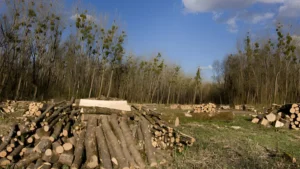
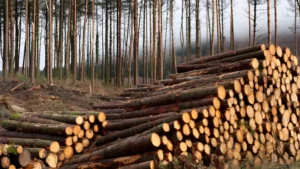



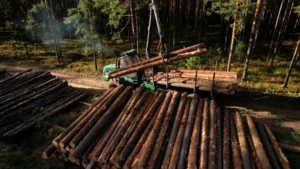


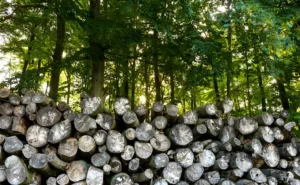
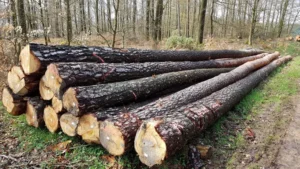
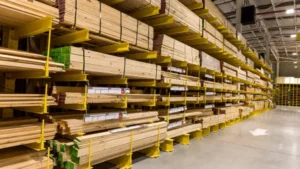
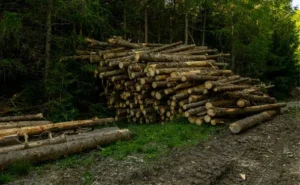
Leave your comment